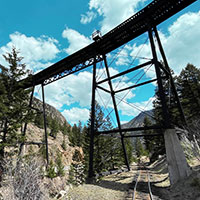 |
Georgetown Loop Railroad Devil's Gate High Bridge |
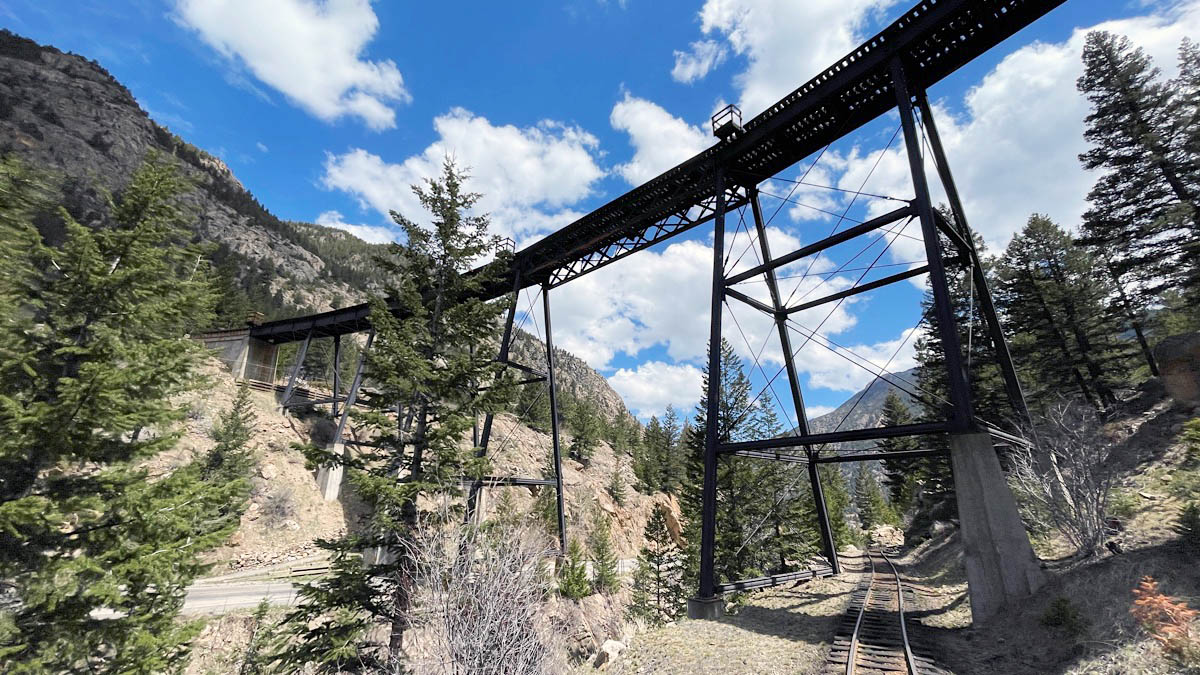
Georgetown, Co / May 2023 / RWH

 or many years, the most famous feature of the Georgetown Loop was the Devil's Gate high bridge. Widely depicted in photographs of the era, it was the single essential component of the rail line to Silver Plume, bridging the valley's narrowest point as the upper level of the "loop" in the track.
or many years, the most famous feature of the Georgetown Loop was the Devil's Gate high bridge. Widely depicted in photographs of the era, it was the single essential component of the rail line to Silver Plume, bridging the valley's narrowest point as the upper level of the "loop" in the track.
 The original masonry piers for the bridge were completed on October 4, 1883, the day before the first car loaded with iron for the span arrived in Georgetown. The Union Pacific contracted with the Phoenixville Bridge Company of Pennsylvania to fabricate and erect the bridge, which was to be constructed on an 18-degree 30-foot curve rising on a 2 percent grade. By November 29 the work was completed. Union Pacific chief engineer Robert Stanton refused to accept the work, however, citing defective riveting and improper placement of the north and south bridge columns. After several weeks of negotiations, the bridge company agreed to make the necessary changes, and the structure was completed on January 24, 1884. Ties and rails were then set in place, and the first test locomotive crossed the Devil's Gate bridge on February 28.
The original masonry piers for the bridge were completed on October 4, 1883, the day before the first car loaded with iron for the span arrived in Georgetown. The Union Pacific contracted with the Phoenixville Bridge Company of Pennsylvania to fabricate and erect the bridge, which was to be constructed on an 18-degree 30-foot curve rising on a 2 percent grade. By November 29 the work was completed. Union Pacific chief engineer Robert Stanton refused to accept the work, however, citing defective riveting and improper placement of the north and south bridge columns. After several weeks of negotiations, the bridge company agreed to make the necessary changes, and the structure was completed on January 24, 1884. Ties and rails were then set in place, and the first test locomotive crossed the Devil's Gate bridge on February 28.
The bridge rested on four iron towers ranging from 33 to 78 feet in height, with sixteen granite piers at the base. Reaching 300 feet across the valley, it was composed of eight spans of 30-foot iron-plate girders and a center span consisting of a 60-foot iron-lattice girder. The bridge rose 95.6 feet above Clear Creek and looped 75 feet above the lower track.
With the closing of the Colorado and Southern line over the Loop in 1939, the high bridge was dismantled and sold as scrap iron. The reconstructed bridge adheres to the design of the original, although two principal modifications have been made to meet current safety standards. First, the diameter of the tower legs has been increased from 8 inches to 12 and 14 inches, with additional size increases in the tension rods. Second, the base piers are formed of solid concrete instead of granite with rubble fill, as the originals were constructed.
The Georgetown Loop: A Capsule History and Guide
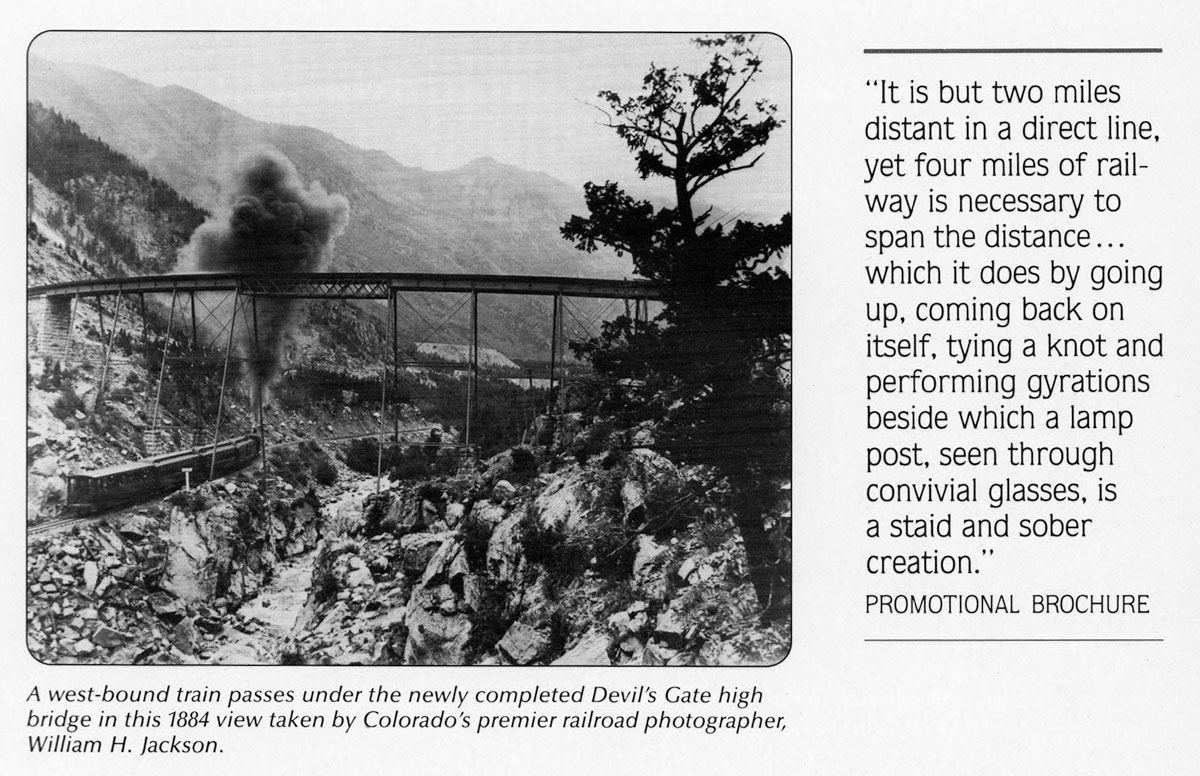
from The Georgetown Loop: A Capsule History and Guide / collection
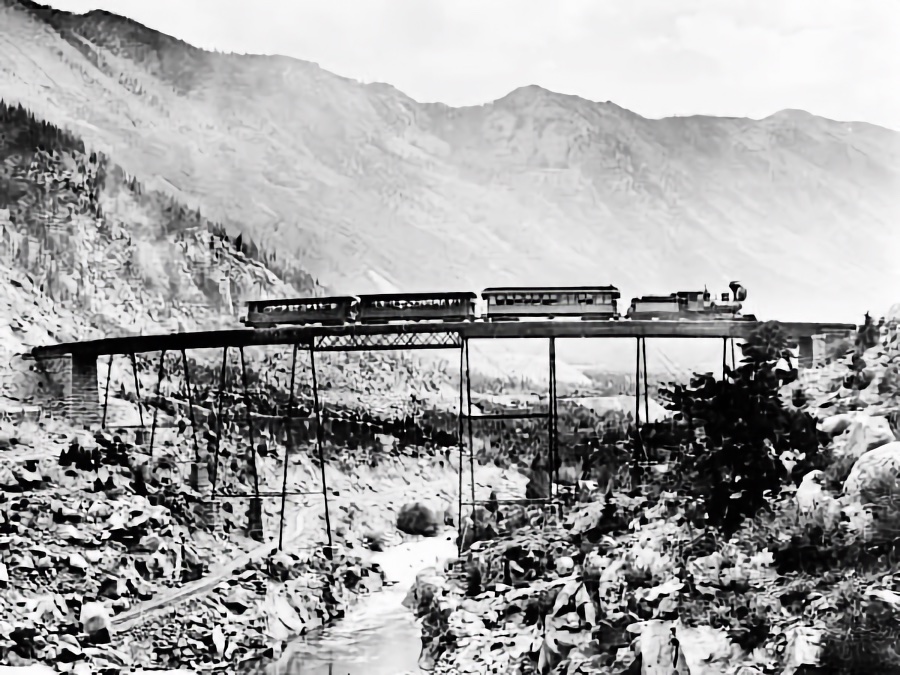
collection
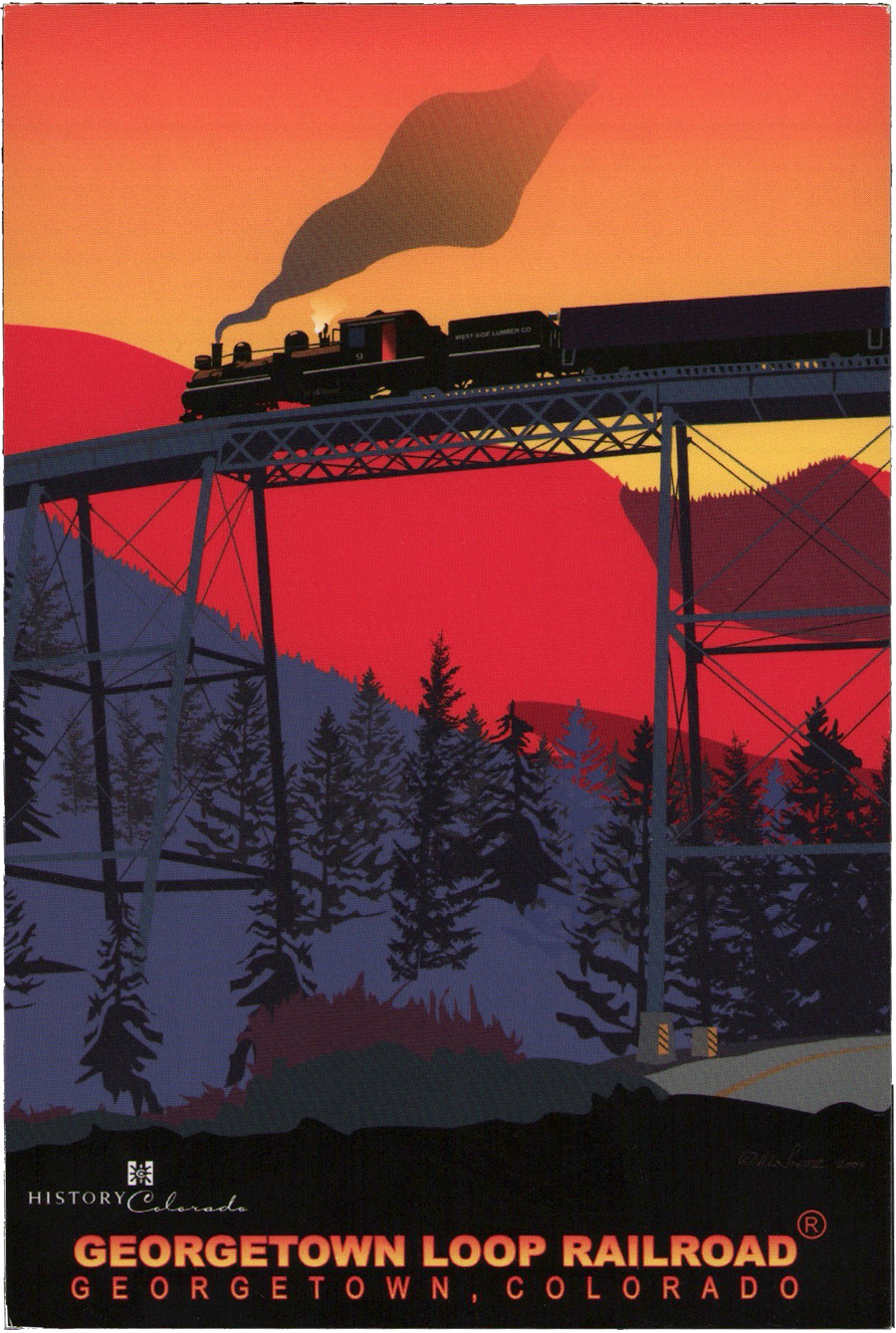
collection

Georgetown, Co / May 2023 / RWH
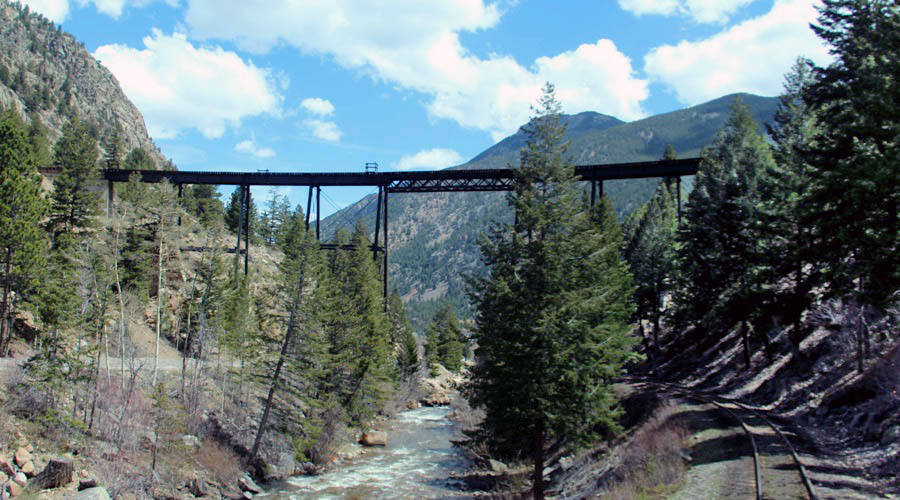
Georgetown, Co / May 2023 / RWH
Devil's Gate High Bridge
- original:Phoenixville Bridge Company
- type:Howe deck truss
- built:original 1877; replacement 1984
- spans:8 solid spans; 1 open 60' span
- length:300 feet, 9.8 feet wide
- notes:
- Built 1877 by the Colorado Central Railroad. Dismantled 1939, but rebuilt 1984 and again in 2002.
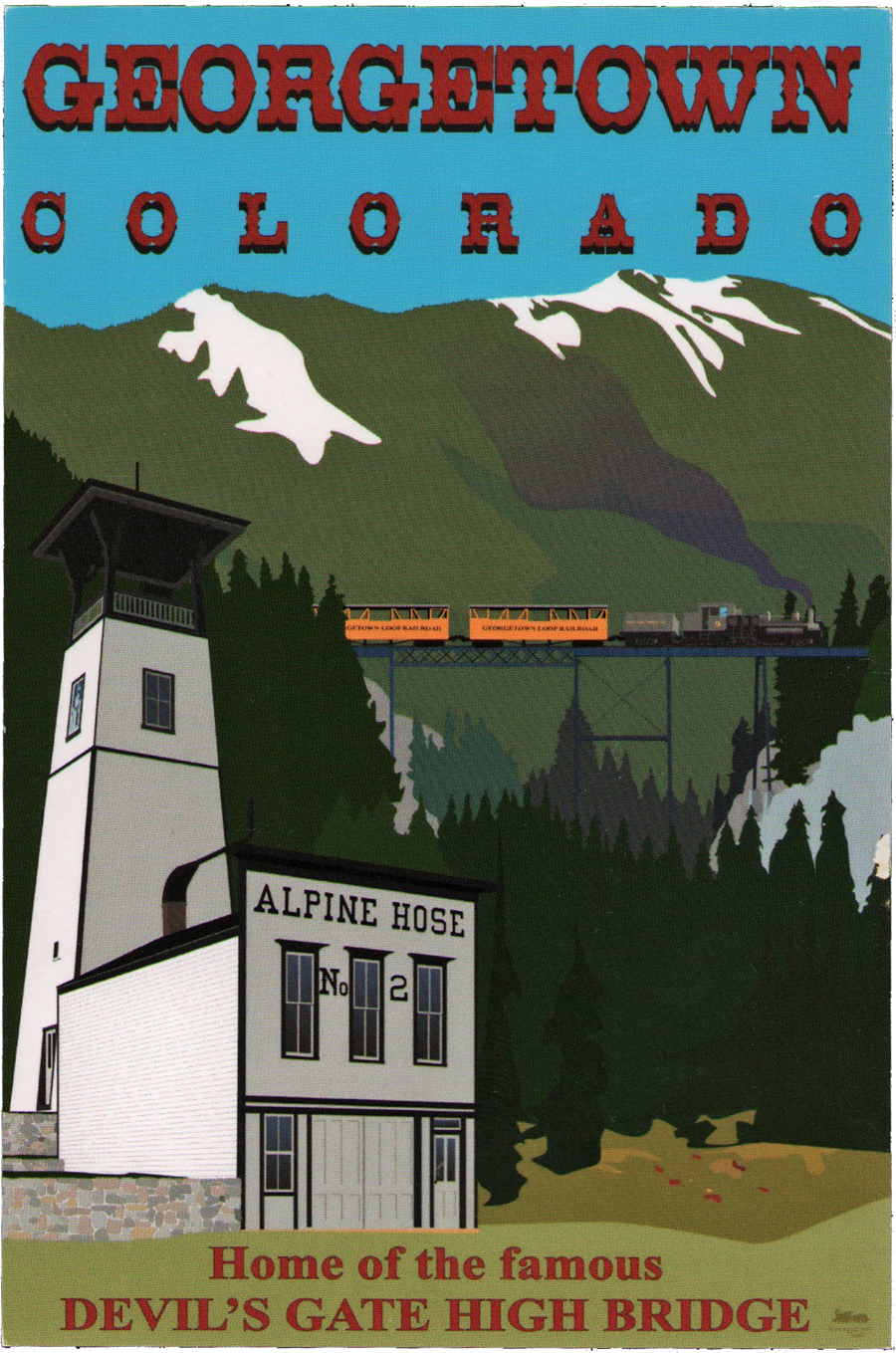
collection
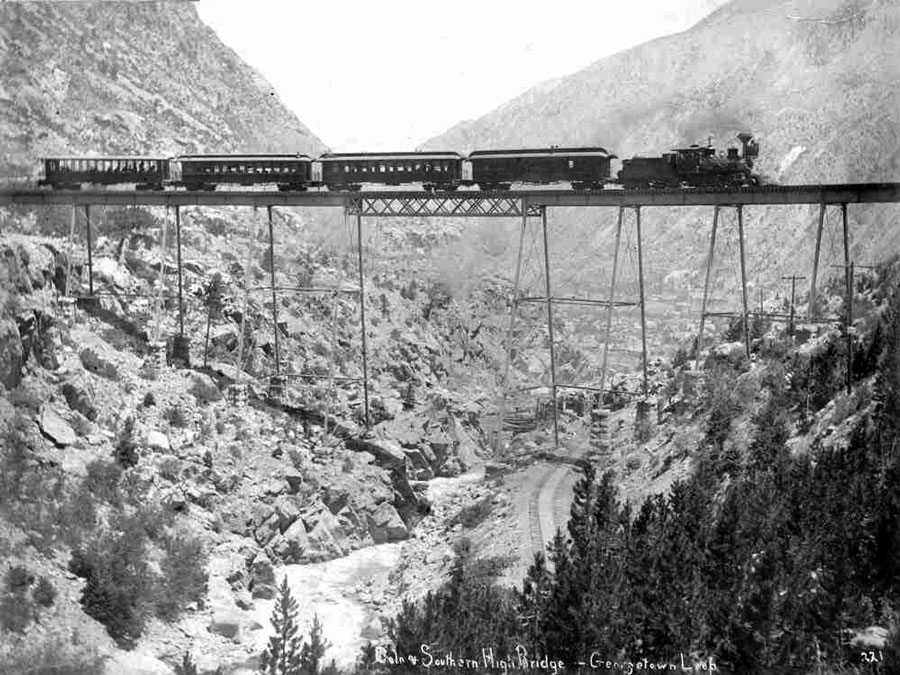
Colorado Encyclopedia

route map / adapted RWH

postcard / collection

Georgetown, Co / May 2023 / RWH

Click to see the Devil's Gate High Bridge plotted on a Google Maps page
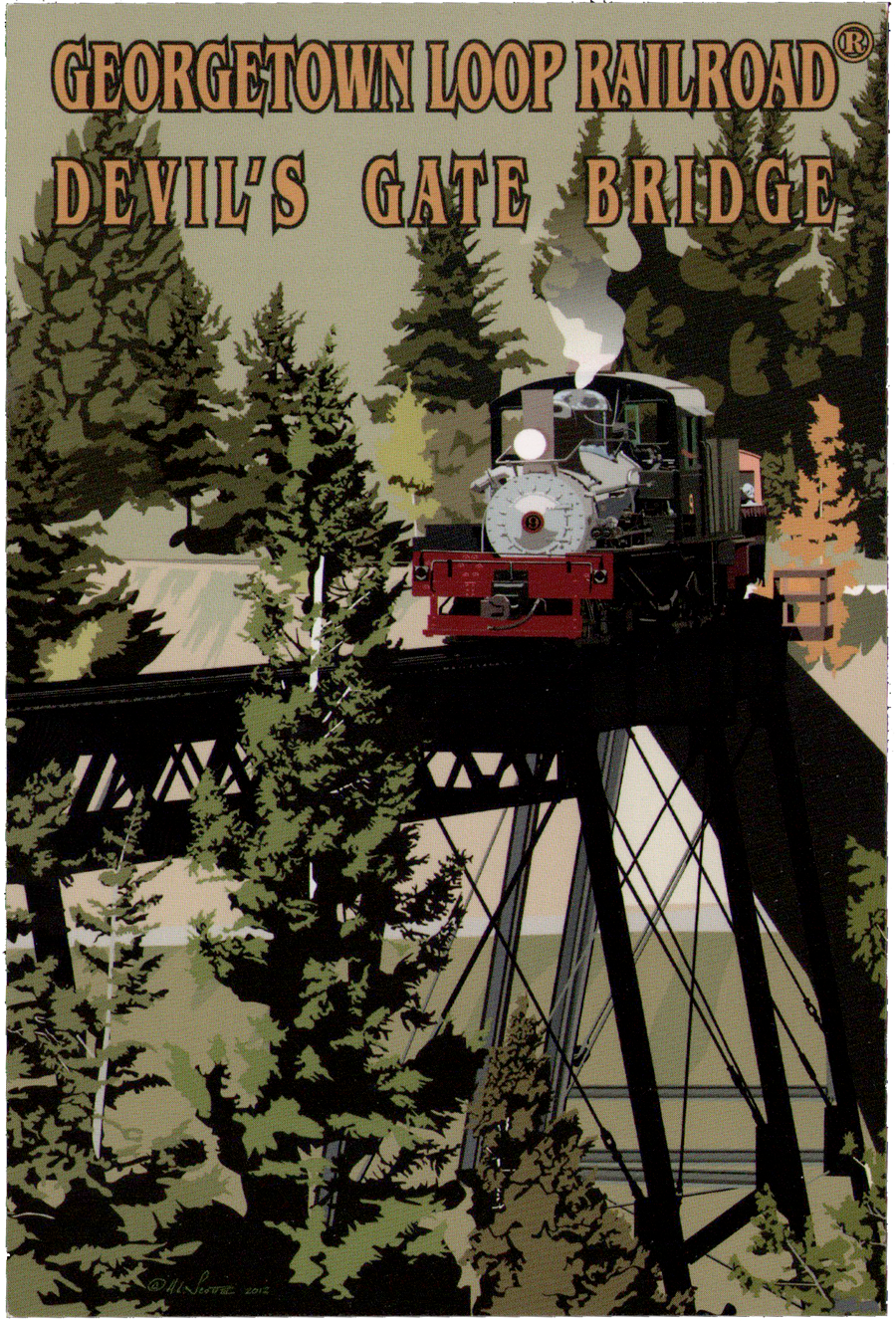
postcard / collection

Georgetown, Co / May 2023 / RWH

Georgetown, Co / May 2023 / RWH

Georgetown, Co / May 2023 / RWH
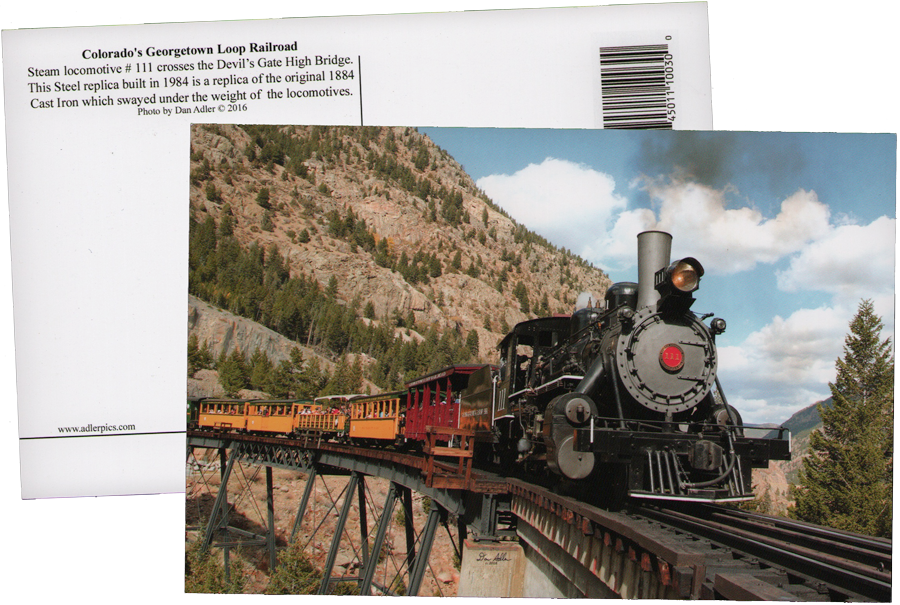
postcard / collection

collection
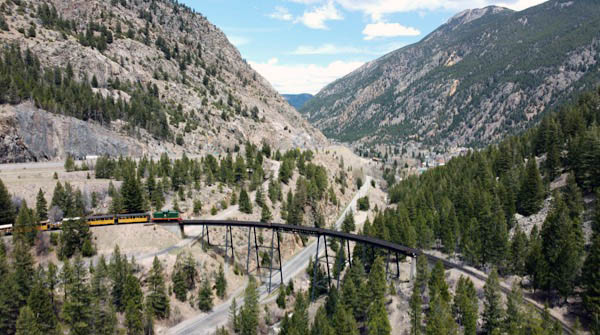
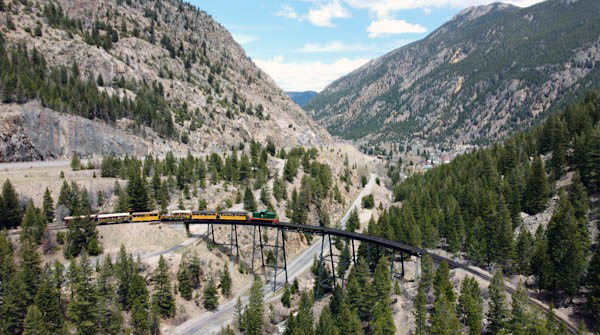
Georgetown, Co / May 2023 / RWH
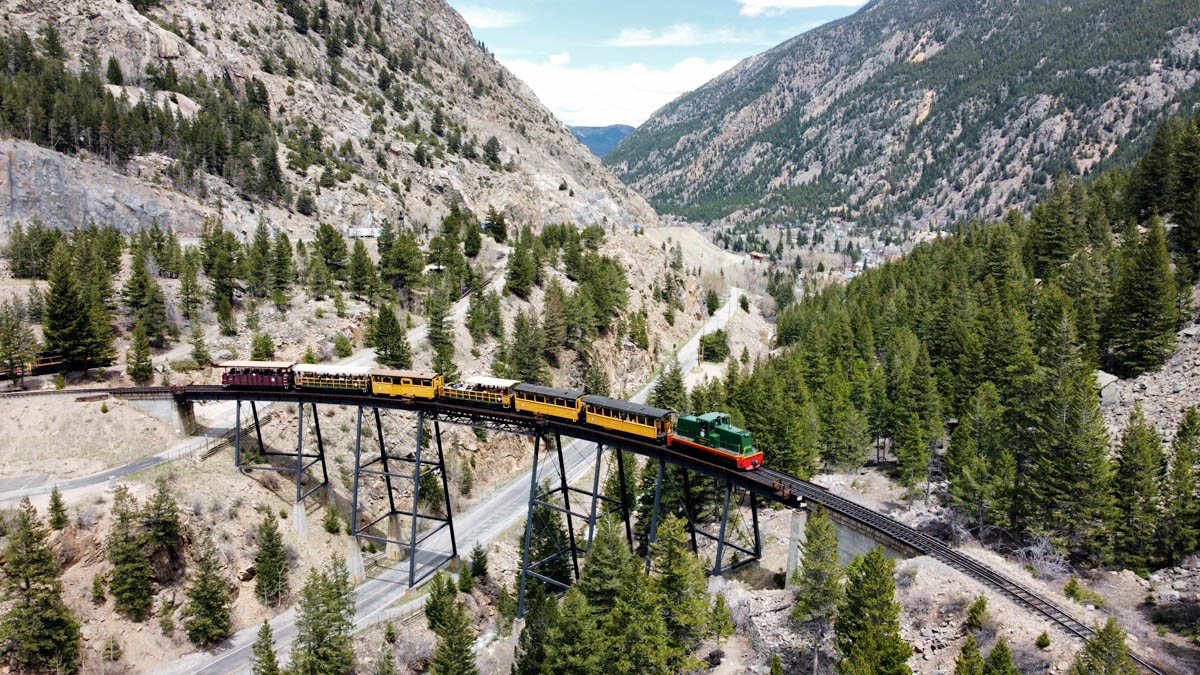
Georgetown, Co / May 2023 / RWH

drawing RWH
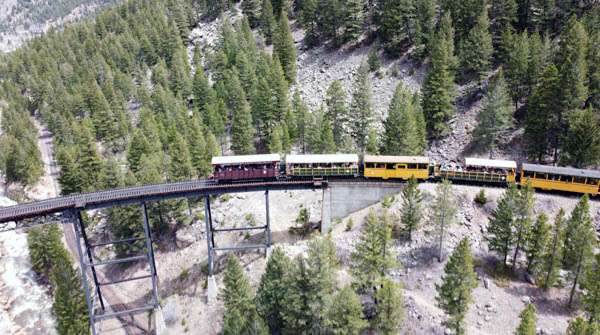
Georgetown, Co / May 2023 / RWH
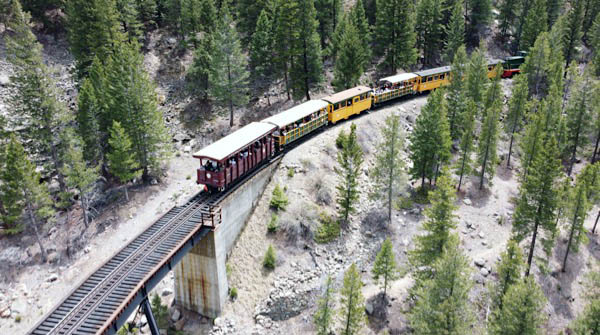
Georgetown, Co / May 2023 / RWH

from The Georgetown Loop: A Capsule History and Guide / collection

postcard / collection
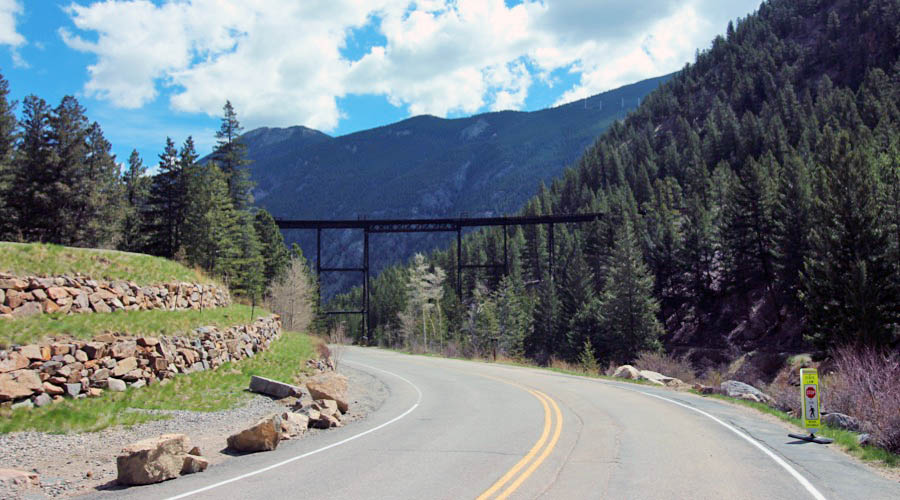
Georgetown, Co / May 2023 / RWH

Birth of the Georgetown Loop
 tarting with a survey of the proposed line in 1879, Union Pacific engineer Jacob B. Blickensderfer and his son Thomas, also an experienced railroad construction engineer, met delays and problems at every turn. To the Blickensderfers’ disgust, the survey crew proved incompetent and inexperienced, and the preliminary surveys were riddled with mistakes. After spending long days in the field, the crew sustained several injuries, and poor morale made it increasingly difficult to keep men on the job. Harsh winters cut the planning season short, and the Blickensderfers grew impatient with the sluggish progress.
tarting with a survey of the proposed line in 1879, Union Pacific engineer Jacob B. Blickensderfer and his son Thomas, also an experienced railroad construction engineer, met delays and problems at every turn. To the Blickensderfers’ disgust, the survey crew proved incompetent and inexperienced, and the preliminary surveys were riddled with mistakes. After spending long days in the field, the crew sustained several injuries, and poor morale made it increasingly difficult to keep men on the job. Harsh winters cut the planning season short, and the Blickensderfers grew impatient with the sluggish progress.
 As of February 1881, Union Pacific was pleased enough with the survey to incorporate the Georgetown, Breckenridge and Leadville Railway, although actual construction of the line would not begin until the following January. Residents in Georgetown and Silver Plume eagerly followed every development as some 200 laborers began working on what was known as the High Line and its Devil’s Gate Bridge. Construction of the bridge alone took two months, beginning in late September 1883. All appeared satisfactory with the bridge until the chief engineer, Robert B. Stanton, discovered that the entire bridge had been installed backwards: the support columns for the north end of the bridge should have been on the south. Stanton refused to accept the flip-flopped bridge, and crews tore it apart and reassembled it—a six-week job in the dead of winter. Finally, on February 28, 1884, Devil’s Gate Bridge was completed.
As of February 1881, Union Pacific was pleased enough with the survey to incorporate the Georgetown, Breckenridge and Leadville Railway, although actual construction of the line would not begin until the following January. Residents in Georgetown and Silver Plume eagerly followed every development as some 200 laborers began working on what was known as the High Line and its Devil’s Gate Bridge. Construction of the bridge alone took two months, beginning in late September 1883. All appeared satisfactory with the bridge until the chief engineer, Robert B. Stanton, discovered that the entire bridge had been installed backwards: the support columns for the north end of the bridge should have been on the south. Stanton refused to accept the flip-flopped bridge, and crews tore it apart and reassembled it—a six-week job in the dead of winter. Finally, on February 28, 1884, Devil’s Gate Bridge was completed.
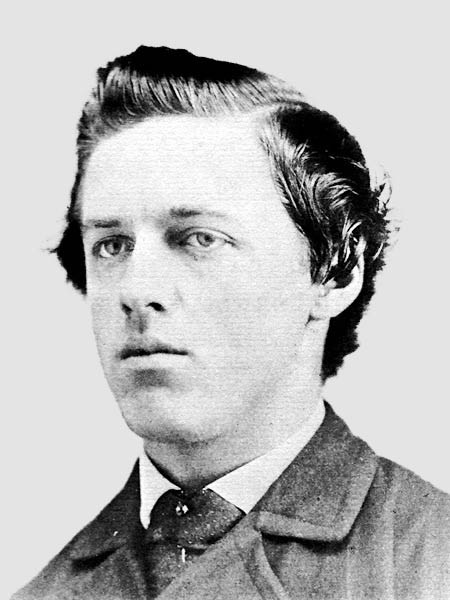 After all of the worry, speculation, and expense—$254,700 to be exact—the line turned out to be the railroad to nowhere. Passing Silver Plume, the line only made it four more miles westward, halting at Bakerville in the shadow of Grays and Torreys Peaks, both over 14,000 feet tall. The Union Pacific had finally found an easier way into Leadville—coming up through South Park instead—and the Georgetown, Breckenridge and Leadville Railroad sat at a dead end. The Georgetown Loop thus never fulfilled its original purpose of transporting riches from the silver mines of Leadville. Rather, it now stood to mine a different sort of treasure—tourist revenue. The Loop’s construction coincided with a growing craze for railroad excursions, and it became popular with vacationers who came to Georgetown to view the natural and man-made wonders along the line. The daring could even walk over the high bridge to the delight of other train passengers. Beginning with famous images of the Georgetown Loop taken by William Henry Jackson immediately after the line’s completion in March 1884, the bridge became among the most famous postcard views of Colorado.
After all of the worry, speculation, and expense—$254,700 to be exact—the line turned out to be the railroad to nowhere. Passing Silver Plume, the line only made it four more miles westward, halting at Bakerville in the shadow of Grays and Torreys Peaks, both over 14,000 feet tall. The Union Pacific had finally found an easier way into Leadville—coming up through South Park instead—and the Georgetown, Breckenridge and Leadville Railroad sat at a dead end. The Georgetown Loop thus never fulfilled its original purpose of transporting riches from the silver mines of Leadville. Rather, it now stood to mine a different sort of treasure—tourist revenue. The Loop’s construction coincided with a growing craze for railroad excursions, and it became popular with vacationers who came to Georgetown to view the natural and man-made wonders along the line. The daring could even walk over the high bridge to the delight of other train passengers. Beginning with famous images of the Georgetown Loop taken by William Henry Jackson immediately after the line’s completion in March 1884, the bridge became among the most famous postcard views of Colorado.
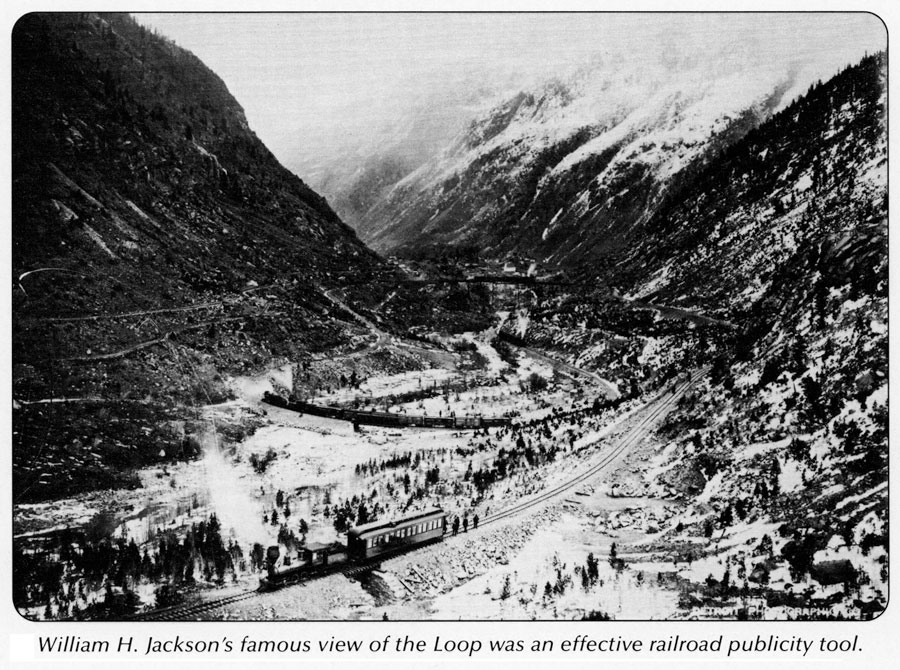
from The Georgetown Loop: A Capsule History and Guide / collection

collection
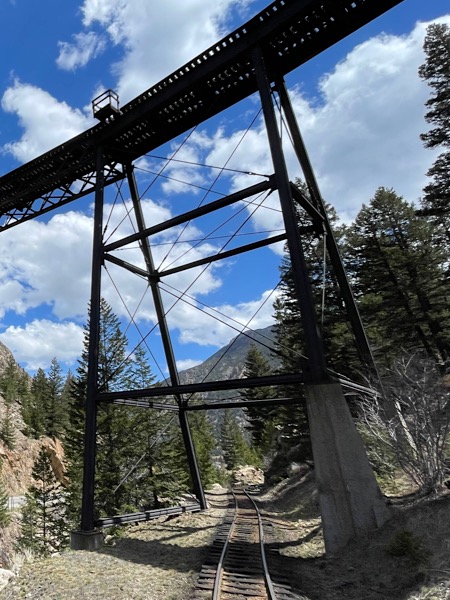
May 2023 / RWH
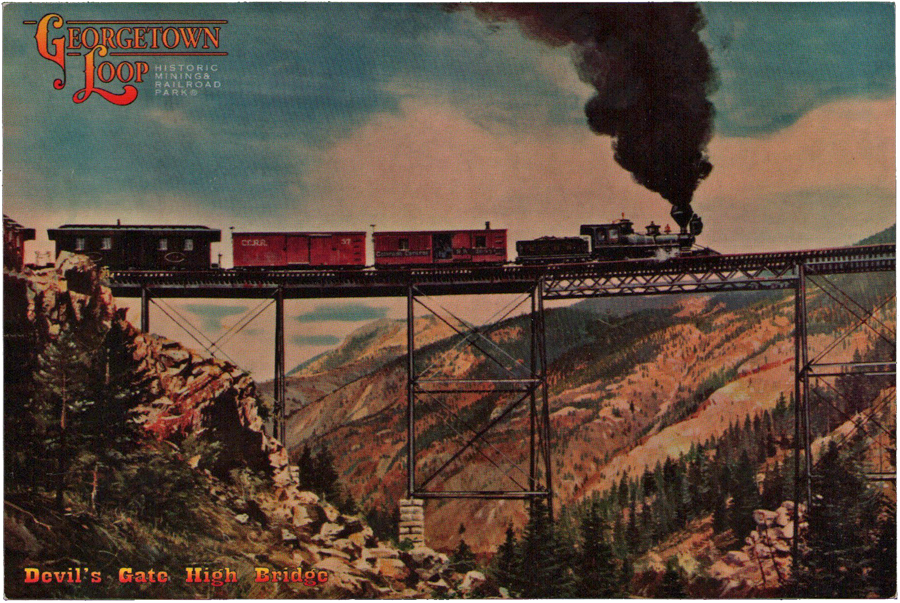
collection

Check out The Trackside Photographer to see more Devil's Gate High Bridge images



